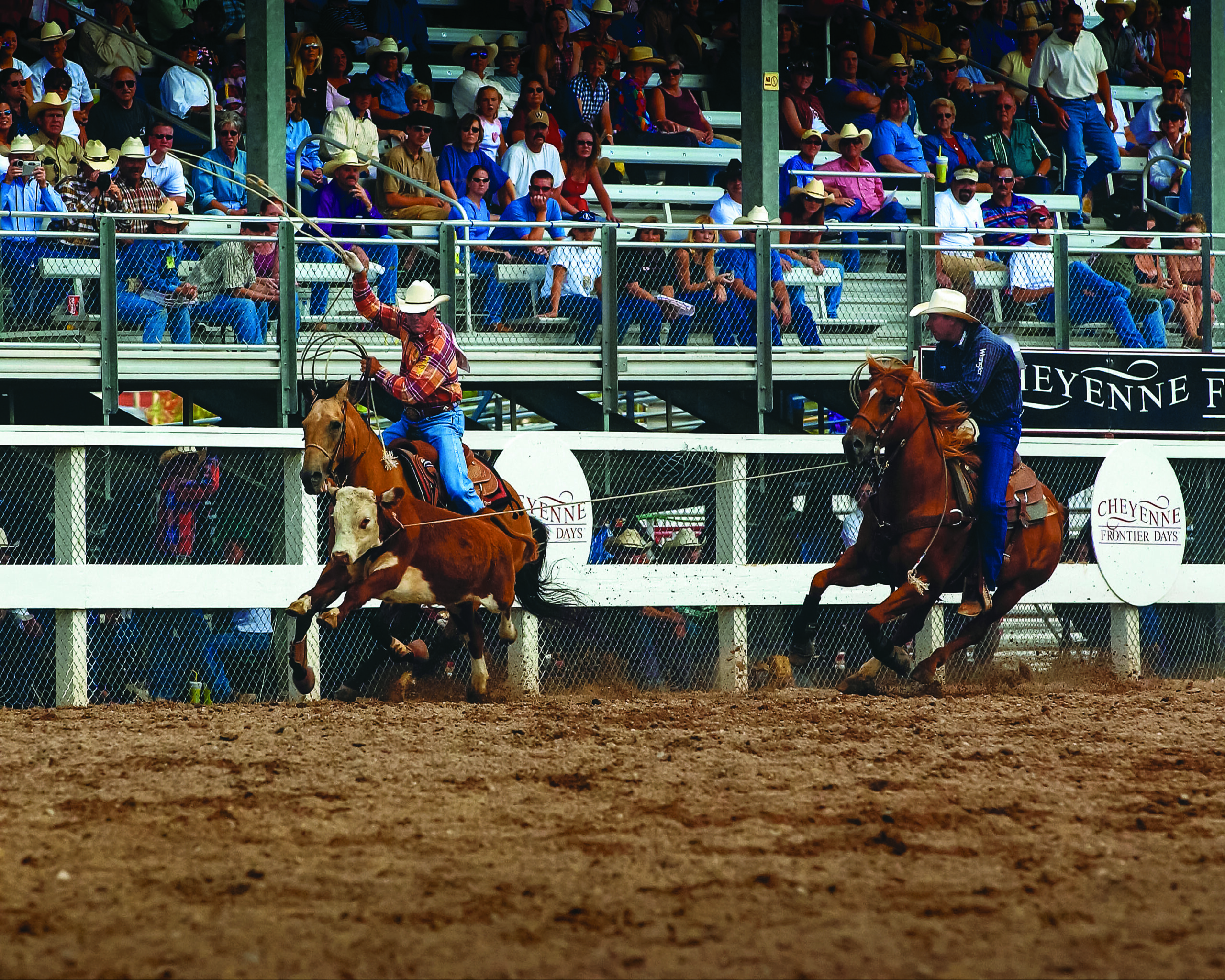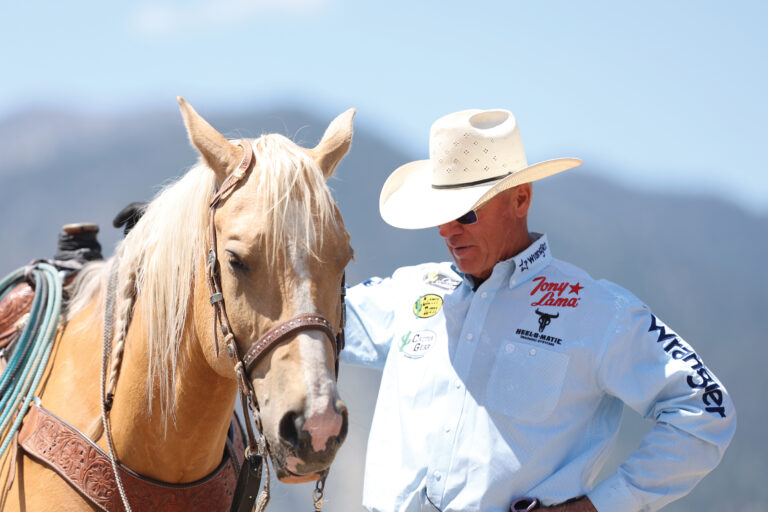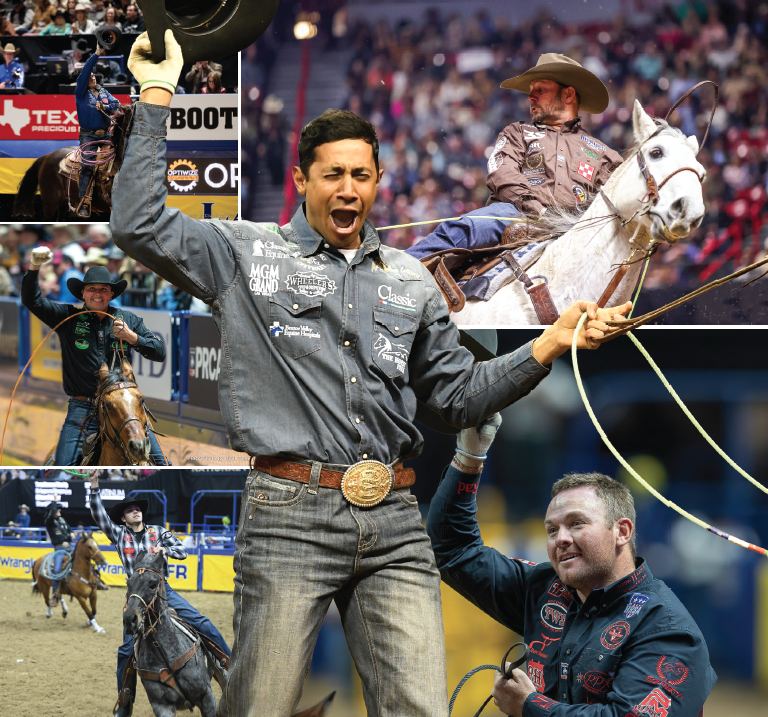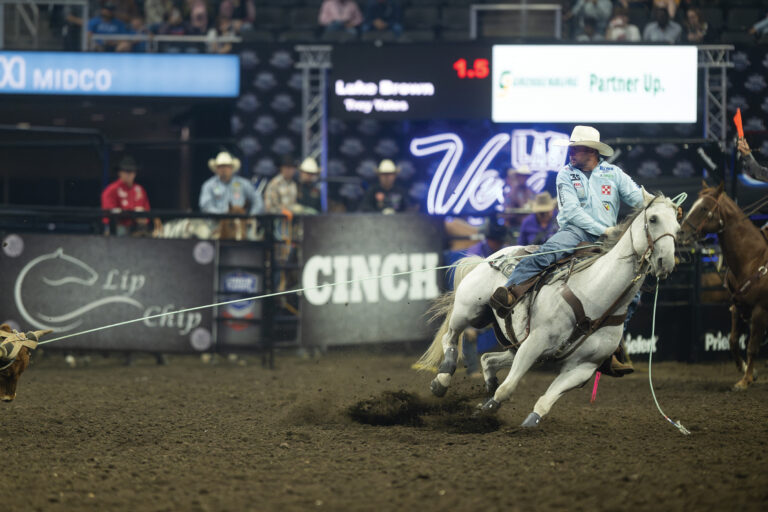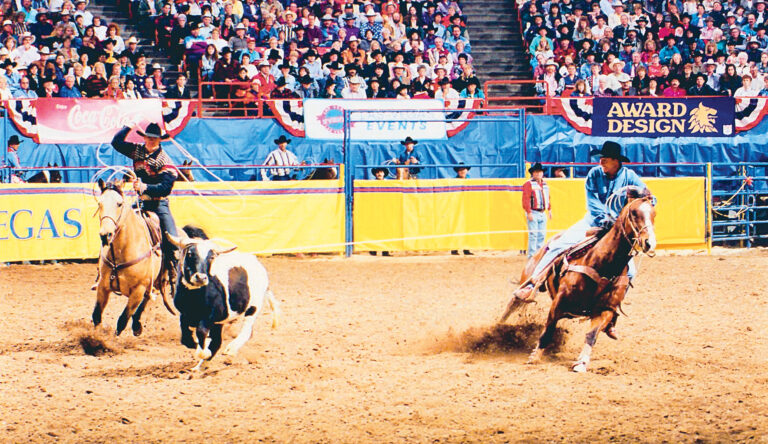With the Mexican border being closed and the price of cattle through the roof in recent times, I wonder if it’s time for more rodeos to consider roping muleys in the team roping? Clay (Cooper) and I won Cheyenne in 2002, which was the first year they added team roping, on muleys. When Walt (Woodard) and I won it in 2011, it was on horned steers. These days, they rope muleys at the rodeos in Clovis, California and Guymon, Oklahoma. I don’t really have a dog in the fight anymore, but am just wondering if it might make sense given the current price of cattle to rope more muleys.
LISTEN ON THE SCORE: The Mexican Border Shutdown on Corriente Cattle
Back in the day, when Clay and I were neighbors in Arizona and practicing every day, we roped a lot of muleys. I’ve never minded roping them, and they rope muleys in Brazil all the time.
Some people act like they’re seeing a ghost when you mention roping muleys. But none of the best ropers are afraid of them. I’d think some stock contractors might like the idea of muleys right now, so they don’t have to lose their tails providing horned steers. They might even be able to reduce the stock charge for the cowboys that way.
From talking to people at roping schools all the time, I’m pretty sure recreational ropers would say heck no to muleys. But that’s only because they’re not used to roping them. A lot of open ropers rope small-horned cattle around the neck to keep from waving it off. When I draw a tiny-horned steer, you can bet your bottom dollar my banker tells me to rope him around the neck.
The traditional model on roping steers was they were expensive to buy, then not worth much when we went to sell them. We were basically buying the horns. With the Mexican border closed this year, I know native Corriente raisers who’ve been extremely happy to get $1,600 a head for year-old steers. I’ve also been told that in the last year a lot of American Corriente raisers started putting beef bulls on their cows, because the beef-cattle market’s been so high.
WATCH: What Ropers Get Wrong About Roping Muleys—And How to Fix It
It typically takes a native steer raised here 12 to 14 months to grow horns big enough to rope at a rodeo or roping. The M-branded cattle from Mexico have historically been older and tougher. They tend to last longer, because they’re bigger bodied and can take more runs.
Last I heard, they’re not allowed to use native cattle raised in the United States in the steer wrestling. But when I hear of some M-branded cattle from Mexico bringing $2,000, I wonder if exceptions might be made until the border re-opens.
If any additional rodeos do consider roping muleys, I hope they’ll make sure they aren’t too heavy for safety reasons. And that they’re prepared. I personally think that Brahma-cross cattle could work really well. Dead fresh cattle make it anybody’s game. I’m a big fan of preparing them, so they break and run, and are more predictable. It makes it less of a drawing contest, and it doesn’t look good if they go to falling down.
To me, roping one around the neck is 10 times easier than roping one around the horns. You don’t risk splitting the horns or waving it off. All you have to do is tip your rope over to the left like you’re heeling, and it’ll put your loop over his head. The only kicker for me is I tend to rope some front legs when I go to reaching at muleys.
Look at Tyler Wade—his neck-catch percentage is high, and he’s a two-time world champion. I’ve seen Kaleb Driggers and every top roper in the world go for neck shots on fresher, smaller native cattle. Makes sense, because it eliminates popping it off.
READ: What You Need to Know About Roping Muleys
As for handling muleys, if you let your horse drop out of there too hard, you’re going to wash them out on the corner and hang your heeler out to dry. When you go to get out of town, you need to lift up on your horse to ease that jerk. You can even slide a little bit of rope right there if your horse really drops.
Clay and I have always roped a lot of muleys, because it’s made economic sense. I’m sure not saying every rodeo should use them, but it might be an option for some so they can make it through these current cattle prices.
—TRJ—




